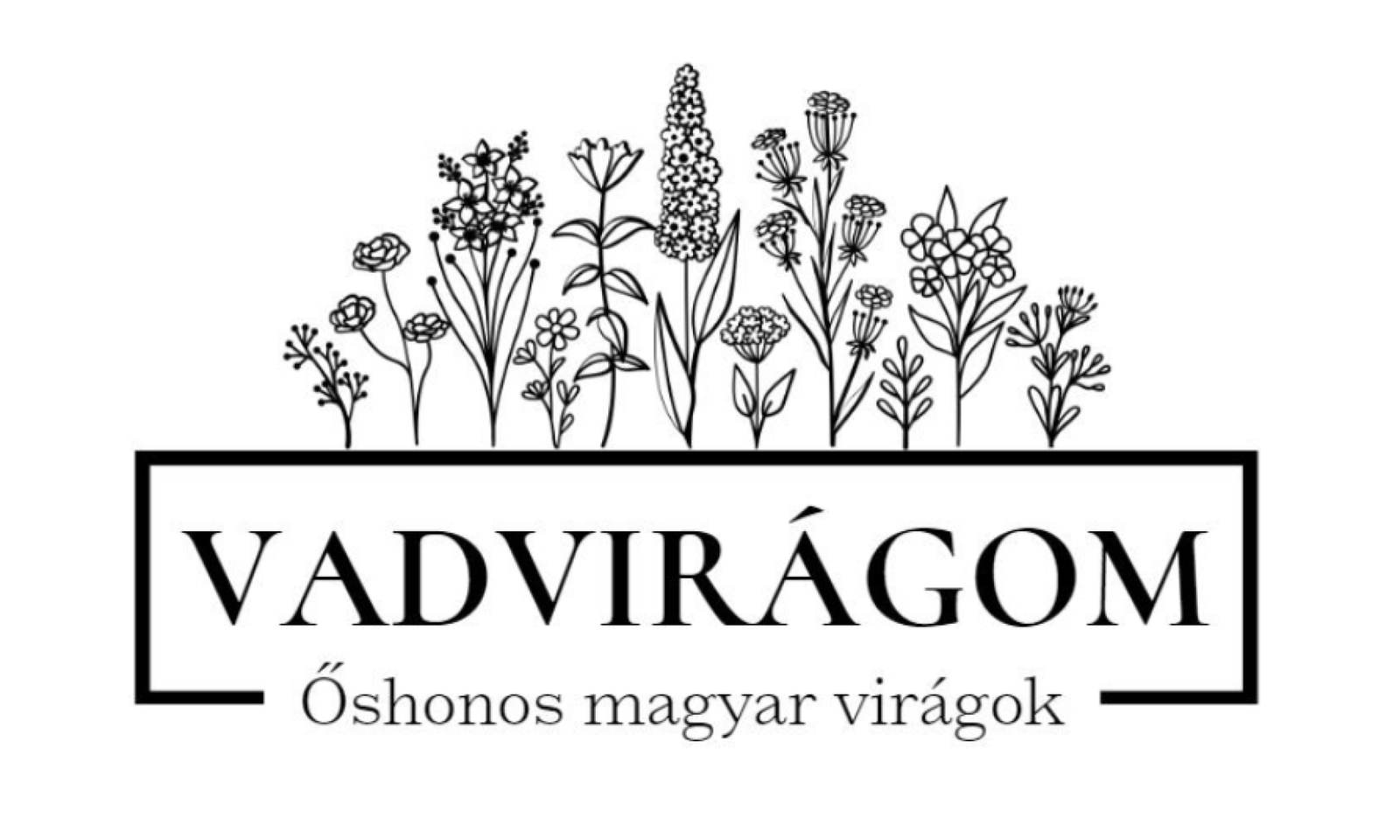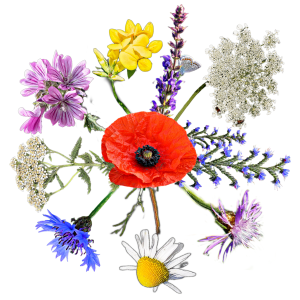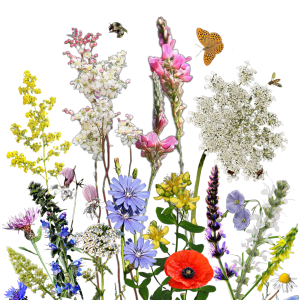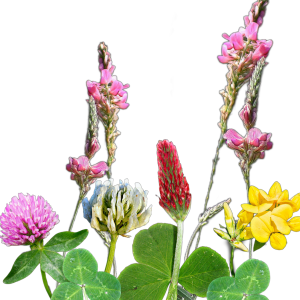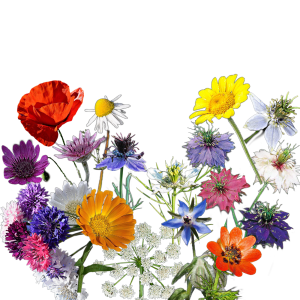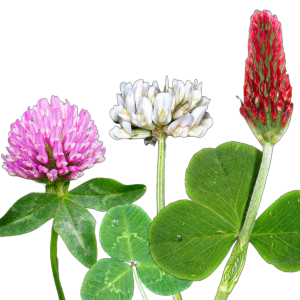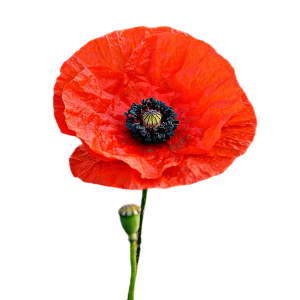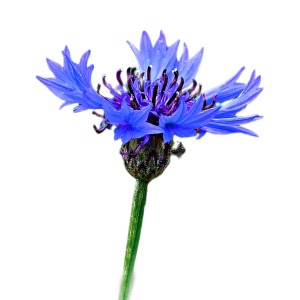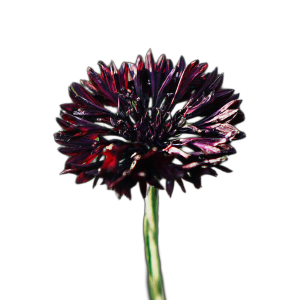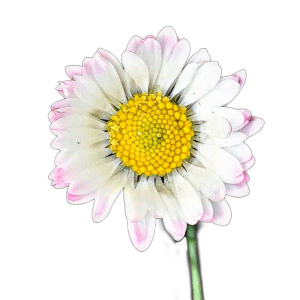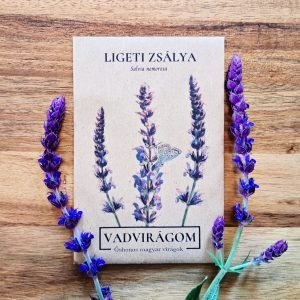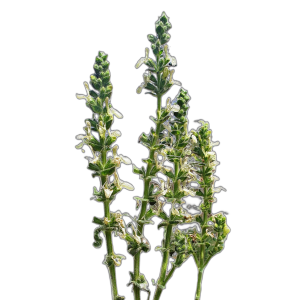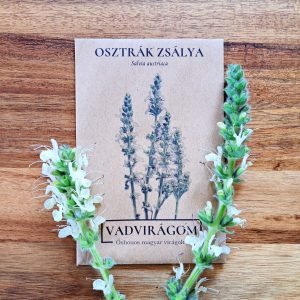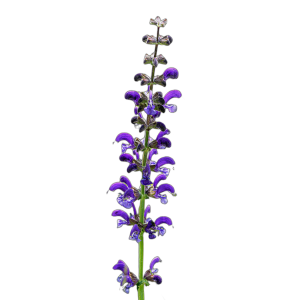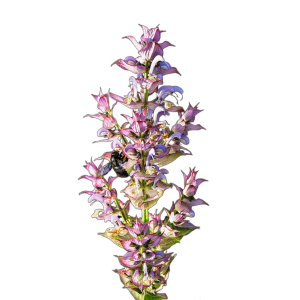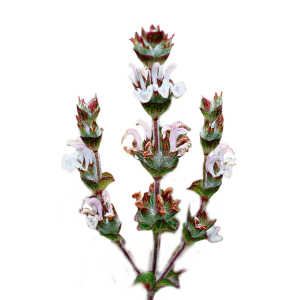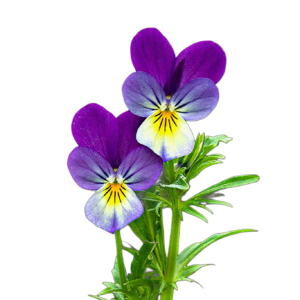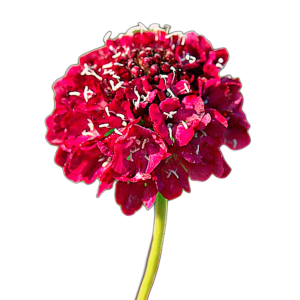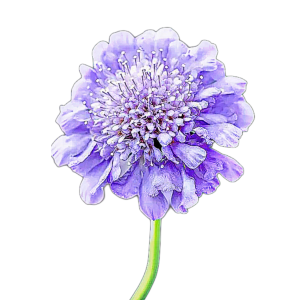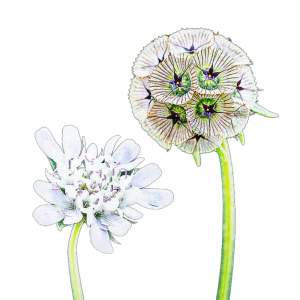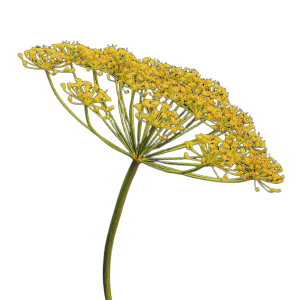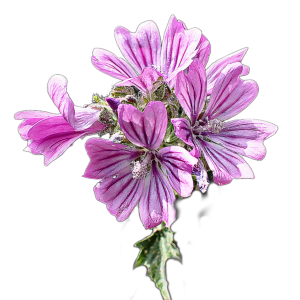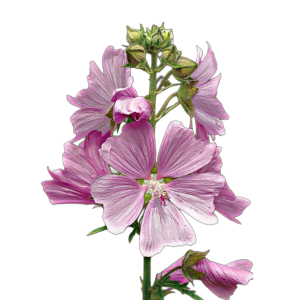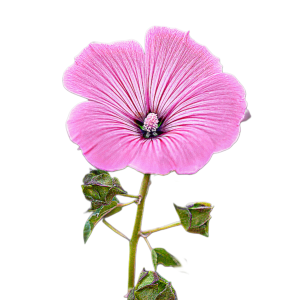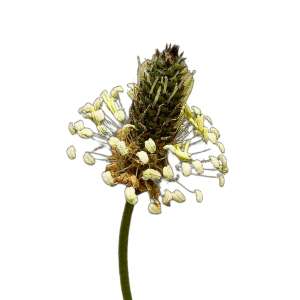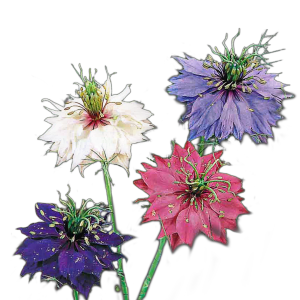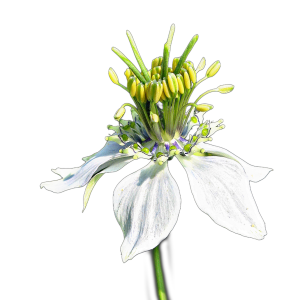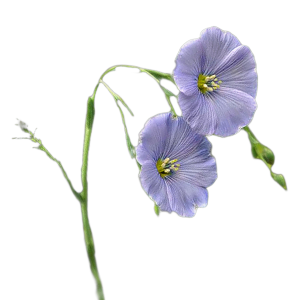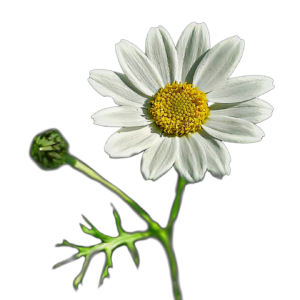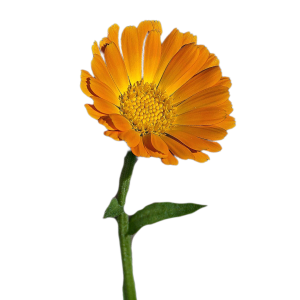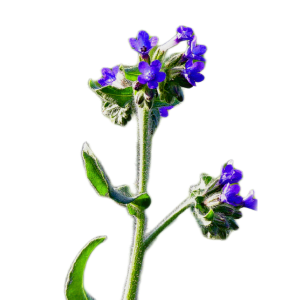“Borzaskata (Nigella damascena „Miss Jekyll blue”) 1g, ~425 mag” a kosárba helyezve. Kosár
-
-
Select options
There are several variations of this product. The variants can be selected on the product page
- Add to wishlistAdd to wishlist
- also for balcony box, seed mix for children
GARDEN READINGS - seed mix for children
- 950 Ft - 2.500 Ft
- This seed mix has been specially created for children to get them interested in gardening and to teach them to love nature. It's also very important for us to introduce children to the wonder of gardening flowers from a young age, and it can be a great family activity to garden with the little ones. The mix is free from toxic plants and we've tried to include hardy, easy-to-care-for species,...
Add to wishlistAdd to wishlist -
Select options
There are several variations of this product. The variants can be selected on the product page
-
-
Select options
There are several variations of this product. The variants can be selected on the product page
- Add to wishlistAdd to wishlist
- 10 native Hungarian wildflowers, seed mix
BEE 2.0 - Bee-feeding seed mix
- 900 Ft - 13.000 Ft
- Make your garden wild with this annual herbaceous seed mix of 10 native Hungarian species and welcome beneficial pollinators to your garden! This mix is a taster into the world of bee-keepers: we have selected 10 species that are pollinator favourites and will make beautiful ornaments to your garden with their long flowering. It includes annual, biennial and perennial flowers. Features: life cycle: annual, biennial, perennial flowering time: may-october size:...
Add to wishlistAdd to wishlist -
Select options
There are several variations of this product. The variants can be selected on the product page
-
-
Select options
There are several variations of this product. The variants can be selected on the product page
- Add to wishlistAdd to wishlist
- 20 native Hungarian wild flowers, seed mix
POLLENANYO 2.0 - beekeeping seed mix
- 900 Ft - 14.500 Ft
- One of the smaller members of the 10-60 species bee-feeding mix range is the pollinator-friendly Pollen Mother seed mix. Go wild with this seed mix and welcome beneficial pollinators to your garden! The more species a mix contains, the more native pollinator species it supports, Pollenanyó pollinator-friendly seed mix contains the best 20 native Hungarian wildflowers for you and your pollinators. And they are beautiful too :) Features:...
Add to wishlistAdd to wishlist -
Select options
There are several variations of this product. The variants can be selected on the product page
-
-
Select options
There are several variations of this product. The variants can be selected on the product page
- Add to wishlistAdd to wishlist
- 40 Hungarian and European wild flowers, seed mix
NEK-TÁR 3.0 - beekeeping seed mix
- 950 Ft - 17.500 Ft
- Make your garden wild with this annual-biennial-annual-evergreen bee-feeding seed mix of 40 species of Hungarian and European wildflowers and welcome beneficial pollinators to your garden! In addition to the Beporzone of 30 native wildflower species, this mix also includes some great pollinator-attracting Mediterranean wildflowers such as borage, marigold, garden ladybird and anise. It also contains several annual European wildflower species,...
Add to wishlistAdd to wishlist -
Select options
There are several variations of this product. The variants can be selected on the product page
-
-
Select options
There are several variations of this product. The variants can be selected on the product page
- Add to wishlistAdd to wishlist
- can be sown between grass, seed mix, green manure
NITRO seed mix
- 1.750 Ft
- Want to improve soil quality naturally while benefiting pollinators? That's exactly what our 5-species green manure seed mix is for! Each species enriches the soil with nitrogen, increasing future yields. Forget fertilizers and use an ecologically sustainable solution while supporting pollinators. Characteristics: life cycle: annual, perennial flowering time: may-october size: 10-60 cm soil: dry, average growing conditions: sunny pollination factor: 9/10...
Add to wishlistAdd to wishlist -
Select options
There are several variations of this product. The variants can be selected on the product page
-
-
Select options
There are several variations of this product. The variants can be selected on the product page
- Add to wishlistAdd to wishlist
- 15 annual Hungarian and European wildflowers for the balcony or window box, seed mix
Oh, ROMERO annual seed mix - also for the balcony
- 950 Ft - 2.750 Ft
- What? Bee-keeper on balcony or balcony? Yes! Just like the highly successful Yarrow seed mix, you can make your garden, balcony or balcony go wild with the annual seed mix of 13 native Hungarian and European species of Oh, Romeo and welcome beneficial pollinators to your garden! Can also be sown in a balcony box. This mix also includes some very colourful, cultivated varieties of some of our favourite flowers. It's made up of easy-to-grow varieties, so if you...
Add to wishlistAdd to wishlist -
Select options
There are several variations of this product. The variants can be selected on the product page
-
-
Select options
There are several variations of this product. The variants can be selected on the product page
- Add to wishlistAdd to wishlist
- may be sown in grass, seed mix, permanent grassland
TRIUMVIRÁGUS seed mix
- 1.750 Ft - 2.500 Ft
- Want a beautiful, colourful and thriving lawn? With this mix, success is guaranteed, even for pollinators: white clover feeds short-tongued pollinators such as house bees, while red clover and purple clover feed long-tongued pollinators such as bumblebees. Like all butterfly plants, testes fix nitrogen from the air and enrich the soil with it. This...
Add to wishlistAdd to wishlist -
Select options
There are several variations of this product. The variants can be selected on the product page
-
-
Add to basket
- Add to wishlistAdd to wishlist
- also for window box, annual, bee-keeper, native
Poppy (Papaver rhoeas) 1g, ~9000 seeds
- 875 Ft
- Who should be introduced to the most iconic wildflower, the reddish pearl of the wheat fields? Fortunately, wildflowers, including poppies (Papaver rhoeas), are making a comeback in gardens these days and are slowly losing their weed status, as their early flowering makes them a very important food source for many of our solitary bees. Properties: other names: poppies, stinking poppies, poppies, gooseberries, dandelion flowers, blood poppies, wild poppies Latin name: Papaver rhoeas family...
Add to wishlistAdd to wishlist -
Add to basket
-
-
Add to basket
- Add to wishlistAdd to wishlist
- also in a window box, annuals
Honey Flower (Lobularia maritima) 0,5g, ~500 seeds
- 875 Ft
- The honey flower (Lobularia maritima), also known as the fragrant ternye or coastal aster, is native to the Mediterranean and has long been a popular ornamental plant worldwide. The origin of its name comes from the Latin word 'lobulus', referring to the plant's tiny pod-like fruit, but from its other name (Alyssum maritima) the word Alyssum means 'lack of madness', because it was once used to treat rabies. Nowadays it is less used in this field, but in return...
Add to wishlistAdd to wishlist -
Add to basket
-
-
Add to basket
- Add to wishlistAdd to wishlist
- also for window box, annual, bee-keeper, native
Cornflower (Centaurea cyanus "wild") 2g, ~420 seeds
- 875 Ft
- The cornflower (Centaurea cyanus) is one of our best known and most loved wild flowers, along with the poppy. Loved by pollinators, it flowers for a relatively long time in the garden. It is a medicinal herb, its flowers are edible, it used to be used to make dye, but it is also excellent for tea, which also gives it a beautiful colour. Early spring sowing with early flowering is an important time for pollinators, but it can also be sown in the autumn, in which case it will have bushier growth in spring/early summer. This...
Add to wishlistAdd to wishlist -
Add to basket
-
-
Add to basket
- Add to wishlistAdd to wishlist
- also for window box, annual, bee-keeper, native
Cornflower - black (Centaurea cyanus "Black Boy") 1g, ~220 seeds
- 875 Ft
- The cornflower (Centaurea cyanus) is one of our best known and most loved wild flowers, along with the poppy. Loved by pollinators, it flowers for a relatively long time in the garden. It is a medicinal herb, its flowers are edible, it used to be used to make dye, but it is also excellent for tea, which also gives it a beautiful colour. Early spring sowing with early flowering is an important time for pollinators, but it can also be sown in the autumn, in which case it will have bushier growth in spring/early summer. This...
Add to wishlistAdd to wishlist -
Add to basket
-
-
Add to basket
- Add to wishlistAdd to wishlist
- annual, herb, beekeeper, native
Chamomile (Matricaria chamomilla) 1g, ~12000 seeds
- 875 Ft
- Chamomile, also known as medicinal chamomile, is our best-known and most versatile herb. It can be made into a tea for colds, used as a poultice for inflamed eyes, and as an antiseptic and anti-inflammatory. It is a common ingredient in cosmetics, soaps and shower gels. Its tea has a calming effect and helps you fall asleep. In England, it is also used as an ingredient in craft beers, where not only the flower but the whole plant is added to the beer. As an annual flower, it quickly adds a lovely splash of colour to your garden. When harvested, it...
Add to wishlistAdd to wishlist -
Add to basket
-
-
Add to basket
- Add to wishlistAdd to wishlist
- perennial, herb, bee-keeper, native
Daisy (Bellis perennis) 0,25g, ~1800 seeds
- 875 Ft
- I think no one needs to be introduced to my favourite creator of flower lawns. The wild form of the daisy (Bellis perennis) is our native wildflower, which does very well in grass and lawns. It is best sown with grass or in seed mixtures when mowing, but do not sow it amongst your existing grass: it is best sown as seedlings, which will germinate very well over time when planted amongst the grass. Its attractiveness as a pollinator is incredible...
Add to wishlistAdd to wishlist -
Add to basket
-
-
Add to basket
- Add to wishlistAdd to wishlist
- 10/10 pollinator, perennial, butterfly favourite, bee-feeder, native
Ligeti sage (Salvia nemorosa) 1g, ~925 seeds
- 875 Ft
- Lime sage (Salvia nemorosa) is one of our most beautiful wild flowers, and its cultivars can be found in many garden shops. No garden should be without it, it is a great favourite with pollinators. The various buttercups are particularly fond of it (see photo), but it is also a great favourite of bumblebees. Lime sage is less well known for its medicinal properties, but like medicinal sage it can be used for its antiseptic properties, or as a herb (although it is also a...
Add to wishlistAdd to wishlist -
Add to basket
-
-
Add to basket
- Add to wishlistAdd to wishlist
- perennial, herb, bee-keeper, native
Austrian Sage (Salvia austriaca) 1g, ~500 seeds
- 875 Ft
- The Austrian sage (Salvia austriaca) is a beautiful native wildflower, unknown to many, that really should be in our gardens. Like the Hungarian sage, it is white in colour, but less branched and taller than the Lignet sage. Like all sages, it is one of our most attractive wild flowers and a great favourite with pollinators, especially bumblebees. Many of our wild flowers were first described by a Franco-Austrian botanist N.J.Jacquin,...
Add to wishlistAdd to wishlist -
Add to basket
-
-
Add to basket
- Add to wishlistAdd to wishlist
- 10/10 pollinator, perennial, butterfly favourite, bee-feeder, native
Sage (Salvia pratensis) 1g, ~500 seeds
- 875 Ft
- The field sage (Salvia pratensis) is one of our most beautiful wild flowers, just like the sage of the Liga. The field sage is slightly larger in stature and has larger flowers than the sage, but has a similar purple colour. You may also see horticultural varieties from time to time. Sage is known for its interesting pollination mechanism, whereby the bee crawling in for nectar moves the lower stamen, which moves the upper stamen, which then spreads the nectar on the pollinator's back...
Add to wishlistAdd to wishlist -
Add to basket
-
-
Add to basket
- Add to wishlistAdd to wishlist
- 10/10 pollinator, perennial, biennial, butterfly favourite, bee-feeder, native
Musk sage (Salvia sclarea) 2g, ~500 seeds
- 875 Ft
- Musk sage (Salvia sclarea) is not native to our area, but it is a great choice for our gardens. Muscadine sclare is a beautiful large-flowered pink or purple sage originally from the Mediterranean, and unlike other sage species it is a biennial. Sometimes white varieties are also found in nurseries. It is a particular favourite of blue woodpeckers, as shown in the picture. The essential oils made from its flowers and leaves are often used in food, cosmetics, and...
Add to wishlistAdd to wishlist -
Add to basket
-
-
Add to basket
- Add to wishlistAdd to wishlist
- annual
Red-leaved sage (Salvia horminum "Blue Monday") 1g, ~350 seeds
- 875 Ft
- The sage (Salvia horminum) is a special kind of sage originally from the Mediterranean. Unlike other sage species, it is an annual and does not display its flowers but its colourful leaves, which in the case of 'Blue Monday' are purple. A very easy to grow annual, it is the perfect space filler for open spring bulbs, but can also be used as cut flowers in bouquets. If you keep the flowers/stems cut, they can decorate your garden all summer long, or they can be used as a...
Add to wishlistAdd to wishlist -
Add to basket
-
-
Add to basket
- Add to wishlistAdd to wishlist
- 10/10 pollinator, perennial, butterfly favourite, bee-feeder, native
Red-leaved Sage (Salvia horminum "Pink Sundae") 0,5g, ~175 seeds
- 875 Ft
- The sage (Salvia horminum) is a special kind of sage originally from the Mediterranean. Unlike other sage species, it is an annual and does not produce flowers but colourful pink leaves, in the case of 'Pink Sundae'. A very easy to grow annual, it is the perfect space filler for open spring bulbs, but can also be used as cut flowers in bouquets. If you keep the flowers/stems cut, they can decorate your garden all summer long, or they can be used as a...
Add to wishlistAdd to wishlist -
Add to basket
-
-
Add to basket
- Add to wishlistAdd to wishlist
- perennial, bee-keeper, native
Hungarian sage (Salvia aethiopis) 1g, ~425 seeds
- 875 Ft
- The Hungarian sage (Salvia aethiopis) is one of our rare sage species, which is white in colour like the Austrian sage, but shorter and more branched. Its leaves are whitish and mottled. Interestingly, it is called African Sage in English, in reference to its wide distribution, as it is also found in North Africa. Contrary to its name, it is not indigenous to our country, having probably been brought here from southern Europe during the Turkish occupation. It blooms for months and, like other sage species,...
Add to wishlistAdd to wishlist -
Add to basket
-
-
Add to basket
- Add to wishlistAdd to wishlist
- 10/10 pollinator, perennial, bee-feeder, native
Common yarrow (Achillea millefolium) 1g, ~7000 seeds
- 875 Ft
- Common yarrow (Achillea millefolium) is well known and is one of our best pollinator wildflowers. Its long flowering period makes it particularly valuable. Evergreen, it is also an excellent choice for lawns. It is a medicinal herb and can even be made into tea. Properties: other names: medicinal yarrow, shagbark, yarrow, mouse-tail, thousandleaf, medicinal thousandleaf, turkey-grass Latin name: Achillea millefolium family: Asteraceae life: perennial flowering time: June-October size: 40-60 cm (flowers lower in mown lawns) soil: dry, average growing area: sunny other: herb...
Add to wishlistAdd to wishlist -
Add to basket
-
-
Add to basket
- Add to wishlistAdd to wishlist
- also in a window box, edible flower, biennial
Pansy tricolor (Viola tricolor) 0,25g, ~375 seeds
- 875 Ft
- The tricolour pansy (Viola tricolor), or wild pansy, is a native Hungarian wildflower. It is perhaps one of our best known and most loved flowers, and fortunately it is often planted in gardens. It is one of the most popular and most loved flowers of our gardens, and it is also one of the most popular and most loved flowers of our gardens. If left to grow, it reproduces very well (it even thrives in the gravel of our driveway!). It is very sweet to my heart,...
Add to wishlistAdd to wishlist -
Add to basket
-
-
Add to basket
- Add to wishlistAdd to wishlist
- also in a window box, edible flower, biennial
Pansy (Viola arvensis) 1g, ~1500 seeds
- 875 Ft
- The field pansy (Viola arvensis) is a native Hungarian wildflower. Its relative, the tricolour pansy, is perhaps one of our most well known and loved flowers, and fortunately it is often planted in gardens. It is a particular highlight of early spring, as the small flowers sown the previous year bloom around March. If left to grow, it reproduces very well (it even thrives in the gravel of our driveway!). A...
Add to wishlistAdd to wishlist -
Add to basket
-
-
Add to basket
- Add to wishlistAdd to wishlist
- 10/10 pollinator, annual, bee-feeder
Cretan snake lily (Echium creticum) 2g, ~650 seeds
- 875 Ft
- The Cretan snake-flower (Echium creticum) is a wildflower from Crete, which, like our terrapin snake-flower, is known for its incredible nectar production. While our teriyas are biennial species, so they flower the year after sowing, Cretan snakeroot is annual, so it is ornamental the year it is sown and a valuable food source for pollinators. It is a member of the borage family and, like its relatives, Cretan snake-eye attract many pollinators, especially in the...
Add to wishlistAdd to wishlist -
Add to basket
-
- Out of StockRead more
- Add to wishlistAdd to wishlist
- 10/10 pollinator, biennial, bee-feeder, native
Blonde Snake Siskin (Echium vulgare) 2g, ~650 seeds
- 875 Ft
- Bladderwort (Echium vulgare) would be one of the top 3 pollinator attracting plants on our list. It is a member of the borage family and, like its relatives, the bluebell snakeweed attracts a lot of pollinators, especially bumblebees. The flowers open in a reddish hue, turning purple through to blue. In English, it is called Viper's Bugloss, named because the flowers resemble an outstretched bugloss when viewed close up.
Add to wishlistAdd to wishlist -
-
-
Add to basket
- Add to wishlistAdd to wishlist
- perennial, herb, bee-keeper, native
Daisy (Leucanthemum vulgare) 1g, ~3000 seeds
- 875 Ft
- Most of us know the meadow daisy (Leucanthemum vulgare) or wild daisy from the like-it-or-not game of petal-peeling. The wild variety is perennial and winter-hardy, if left undisturbed it will also sow its seeds beautifully and can form larger colonies. Its long bloom makes it a valuable flower for pollinators but it is also beautiful. Properties.
Add to wishlistAdd to wishlist -
Add to basket
-
- Out of StockRead more
- Add to wishlistAdd to wishlist
- 10/10 pollinator, annual, butterfly favourite, bee-feeder, native
Devil's eye (Scabiosa atropurpurea "Fire King") 0,3g, ~45 seeds
- 875 Ft
- The devil's-eye (Scabiosa atropurpurea) is a native European flower, closely related to the buttercup and pale devil's-eye (Scabiosa ochroleuca and Scabiosa columbaria), which are also native to Europe. It produces much larger flowers, up to 5 cm in diameter, and can grow up to 100 cm tall. The devil's eye 'Fire King' is an annual species, but overwinters as a seedling. Its stems can be supported on bushy, windy...
Add to wishlistAdd to wishlist -
-
-
Add to basket
- Add to wishlistAdd to wishlist
- 10/10 pollinator, annual, butterfly favourite, bee-feeder, native
Scabiosa atropurpurea "Snowmaiden" 0,3g, ~45 seeds
- 875 Ft
- The devil's-eye (Scabiosa atropurpurea) is a native European flower, closely related to the buttercup and pale devil's-eye (Scabiosa ochroleuca and Scabiosa columbaria), which are also native to Europe. It produces much larger flowers, up to 5 cm in diameter, and can grow up to 100 cm tall. The Snowmaiden devil's-eye is an annual species, but overwinters as a seedling. Its stems can be supported on a bush, in a windy spot...
Add to wishlistAdd to wishlist -
Add to basket
-
-
Add to basket
- Add to wishlistAdd to wishlist
- 10/10 pollinator, annual, butterfly favourite, bee-feeder, native
Scabiosa atropurpurea "Oxford Blue" 0,3g, ~45 seeds
- 875 Ft
- The devil's-eye (Scabiosa atropurpurea) is a native European flower, closely related to the buttercup and pale devil's-eye (Scabiosa ochroleuca and Scabiosa columbaria), which are also native to Europe. It produces much larger flowers, up to 5 cm in diameter, and can grow up to 100 cm tall. The Oxford Blue devil's eye is an annual species, but will overwinter as a seedling. Its stems can be supported on bare stems, in windy...
Add to wishlistAdd to wishlist -
Add to basket
-
-
Add to basket
- Add to wishlistAdd to wishlist
- 10/10 pollinator, annual, butterfly favourite, bee-feeder, native
Devil's eye (Scabiosa atropurpurea "Black Knight") 0,3g, ~45 seeds
- 875 Ft
- The devil's-eye (Scabiosa atropurpurea) is a native European flower, closely related to the buttercup and pale devil's-eye (Scabiosa ochroleuca and Scabiosa columbaria), which are also native to Europe. It produces much larger flowers, up to 5 cm in diameter, and can grow up to 100 cm tall. Devil's Eye Black Knight is an annual species, but overwinters as a seedling. Its stems can be supported on bare stems, in windy...
Add to wishlistAdd to wishlist -
Add to basket
-
-
Add to basket
- Add to wishlistAdd to wishlist
- 10/10 pollinator, annual, butterfly favourite, bee-feeder, native
Starry devil's eye (Scabiosa stellata) 0,5g, ~20 seeds
- 875 Ft
- The starry devil's-eye (Scabiosa stellata) is a native European wildflower, whose dried seed pods can make beautiful elements in bouquets. This is the speciality of this species, but it is also very useful in the garden when in flower, attracting, like other species of devil's eye, a large number of pollinators, bees and butterflies. You can also cut off the open flower heads to prolong flowering, but be sure to leave them to ripen to seed, as they have a beautiful seed coat....
Add to wishlistAdd to wishlist -
Add to basket
-
-
Add to basket
- Add to wishlistAdd to wishlist
- annual, herbaceous, bee-keeper, native
Capers (Anethum graveolens) 5g, ~3250 seeds
- 875 Ft
- It's strange to describe such a well-known herb, but let's run with it. Without dill (Anethum graveolens), you can't have a proper pickled cucumber or pickle. Or pumpkin stew :) But if you look closely, it actually has quite pretty umbellate flowers, so it's not bad for decoration. But what makes them worth planting in a pollinator-friendly garden is that they are the food plant for one of our most beautiful butterflies, the swallowtail butterfly (the other umbelliferous...
Add to wishlistAdd to wishlist -
Add to basket
-
-
Add to basket
- Add to wishlistAdd to wishlist
- annual, beekeeping, native
Wild Purple Violet (Daucus carota "Dara") 0,1g, ~145 seeds
- 875 Ft
- Our well-known wild flower, the wild cousin of our favourite carrot, is the wild carrot (Daucus carota). Not only pollinators, but other insects are also very fond of it, and you can often see boda boda and other small insects basking on its top. It is also the food plant of one of our beautiful butterfly species, the caterpillar of the swallowtail butterfly. This breeding variety starts flowering in purple and becomes increasingly pinker in hue as it opens. It is a fantastically graceful looking plant...
Add to wishlistAdd to wishlist -
Add to basket
-
-
Add to basket
- Add to wishlistAdd to wishlist
- annual, beehive, cut flower
Toothpick grass (Ammi visnaga "Green Mist") 1 gram, ~1600 seeds
- 875 Ft
- Toothpick (Ammi visnaga) 'Green Mist' is a cultivar of the European wildflower from the Middle East and the Mediterranean, which is great for bouquets or even as a dry flower. It looks a bit like wild marigold, has a similar height, and in English toothpick is called "Queen Ann's lace", similar to wild marigold. The opening flower heads are greenish in hue and then turn white, forming almost hemispheres. A...
Add to wishlistAdd to wishlist -
Add to basket
-
-
Add to basket
- Add to wishlistAdd to wishlist
- annual, beekeeping
Wood mallow (Malva sylvestris "Zebrina") 0,5g, ~100 seeds (Copy)
- 875 Ft
- The forest mallow "Zebrina" (Malva sylvestris "Zebrina") is a cultivar of the forest mallow (Malva sylvestris), which is also native to our country. The forest mallow (Malva sylvestris) is our perennial wildflower, whose pollen is very popular with many bee species. Sometimes you can see bees drowning in the pollen of mallow :) A delicacy known as pap cheese. In ancient times, its leaves were used to make stew. The whole plant is edible and medicinal, and the flowers are used to make tea.
Add to wishlistAdd to wishlist -
Add to basket
-
-
Add to basket
- Add to wishlistAdd to wishlist
- perennial, bee-keeper, native
Wood mallow (Malva sylvestris) 1g, ~230 seeds
- 875 Ft
- The wood mallow (Malva sylvestris) is our perennial wildflower, whose pollen is much loved by many bee species. Sometimes you can see bees drowning in the pollen of mallow :) A delicacy known as pap cheese. In ancient times, its leaves were used to make stew. The whole plant is edible and medicinal, and the flowers can be made into tea. Applied externally, the leaves are excellent for wasp and scorpion stings and skin irritations. Several cultivated varieties are annuals, their pollinator attraction properties...
Add to wishlistAdd to wishlist -
Add to basket
-
-
Add to basket
- Add to wishlistAdd to wishlist
- two-year
Black Mallow Rose (Alcea rosea "Nigra") 2g, ~100 seeds
- 875 Ft
- The Black Mallow Rose (Alcea rosea 'Nigra') has a long tradition in Hungarian gardens and its pollen is also very popular with pollinators. Historically, the varieties were introduced to Europe from south-west China in the 15th century and, according to my information, the black colour variation was created by Hungarian breeding. In the Middle Ages, various parts of the plant were used for medicinal purposes, such as anti-inflammatory and digestive treatment, and as a dyeing plant...
Add to wishlistAdd to wishlist -
Add to basket
-
-
Add to basket
- Add to wishlistAdd to wishlist
- perennial, bee-keeper
Mallow (Malva sylvestris ssp. mauritiana) 1g, ~230 seeds
- 875 Ft
- The mallow (Malva sylvestris ssp. mauritania) is a subspecies of the forest mallow (Malva sylvestris), which is a European species native to the south of us. Although it can almost be regarded as a native species, as it has been known and cultivated in Hungary for centuries for its medicinal properties. As a medicinal herb, the dried petals of the mallow are brewed as a tea, which can be used for coughs, asthma and other upper respiratory ailments. And last but not least, it is a fantastic source of pollen: it...
Add to wishlistAdd to wishlist -
Add to basket
-
-
Add to basket
- Add to wishlistAdd to wishlist
- perennial, bee-keeper, native
Musk mallow (Malva moschata) 0,5g, ~250 seeds
- 875 Ft
- The musk mallow (Malva moschata) is a native Hungarian wildflower, whose pollen, like that of the forest mallow, is loved by many bee species. It gets its name from its distinctive scent, a perfume-like musky smell, hence the name. If you don't know what musk smells like, you should definitely try it :) Growing bushy, it can be a perfect alternative to the often deadly alien pink/splendid grove sedge that is often a threat to ducktail sedge. It blooms all summer, from June to September,...
Add to wishlistAdd to wishlist -
Add to basket
-
-
Add to basket
- Add to wishlistAdd to wishlist
- perennial, bee-keeper
Garden sage (Lavatera trimestris "Silver Cup") 1g, ~150 seeds
- 875 Ft
- The garden mallow (Lavatera trimestris) is a species native to the Mediterranean region, often planted as an ornamental. It is a real Jolly Joker: in the spring, around May, it sheds its seeds and grows very quickly, producing huge hibiscus-like flowers from June until frost. If you're the impatient type and want to enjoy a quick spring scattering, it's a great choice. It can grow quite large, up to 80 cm...
Add to wishlistAdd to wishlist -
Add to basket
-
-
Add to basket
- Add to wishlistAdd to wishlist
- perennial
Carpathian bellflower (Campanula carpatica) 0,25g, ~3625 seeds
- 875 Ft
- The Carpathian bellflower (Campanula carpatica) is a native species of the Carpathians, but is no longer native to present-day Hungary. Fortunately, this low perennial bellflower is often planted in gardens. Carpathian bluebells are easy to grow and are a charming plant for lower perennial gardens and rock gardens, flowering all summer and even into autumn. It looks beautiful when at the peak of flowering the plant is covered in purple, bell-shaped flowers.
Add to wishlistAdd to wishlist -
Add to basket
-
-
Add to basket
- Add to wishlistAdd to wishlist
- perennial, herb, bee-keeper, native
Lanceolate Plantain (Plantago lanceolata) 2g, ~1000 seeds
- 875 Ft
- Who doesn't know the syrupy, cough-relieving form of spearwort (Plantago lanceolata) from childhood, a less popular cough syrup as a child? Its medicinal properties are undoubted, but its long flowering period also makes it attractive to pollinators, who mainly collect pollen. It can also be used externally to treat wounds and stings. It is an important and common species in lawns. Properties: other names: lamb's tongue, lizard's tongue, netting grass, snake's tongue, goose's tongue, devil's rib, plantain, plantain...
Add to wishlistAdd to wishlist -
Add to basket
-
-
Add to basket
- Add to wishlistAdd to wishlist
- also for window boxes, annuals, herbs, medicinal plants, bee-keepers
Borzaskata (Nigella damascena "Miss Jekyll blue") 1g, ~425 seeds
- 875 Ft
- Badger's catnip (Nigella damascena) is a flower from the Mediterranean that is often planted as an ornamental in gardens. It is a close relative of the field ladysweet (Nigella arvensis), also native to Hungary, also known as candelilla, and of the garden ladysweet (Nigella sativa), used as a herb and medicinal plant, and the Spanish ladysweet (Nigella hispanica), not yet well known in Hungary but often planted elsewhere.
Add to wishlistAdd to wishlist -
Add to basket
-
-
Add to basket
- Add to wishlistAdd to wishlist
- also for window boxes, annuals, herbs, medicinal plants, bee-keepers
Borzaskata (Nigella damascena "Persian Jewels") 1g, ~425 seeds
- 875 Ft
- Badger's catnip (Nigella damascena) is a flower from the Mediterranean that is often planted as an ornamental in gardens. It is a close relative of the field ladysweet (Nigella arvensis), also native to Hungary, also known as candelilla, and of the garden ladysweet (Nigella sativa), used as a herb and medicinal plant, and the Spanish ladysweet (Nigella hispanica), not yet well known in Hungary but often planted elsewhere.
Add to wishlistAdd to wishlist -
Add to basket
-
-
Add to basket
- Add to wishlistAdd to wishlist
- also for window boxes, annuals, herbs, medicinal plants, bee-keepers
Garden Ladybird/Black Fennel (Nigella sativa) seed
- 875 Ft
- The garden marigold (Nigella sativa) is an annual plant native to the Mediterranean and the Middle East, the seed of which is the spice known as black cumin, perhaps best known in this country from the tops of Turkish and Middle Eastern pastries. It tastes a bit like onion and smells like pepper and oregano. Its relative is the common garden marigold (Nigella damascena), the field ladybird (Nigella arvensis), which is also native to Hungary, and the...
Add to wishlistAdd to wishlist -
Add to basket
-
-
Add to basket
- Add to wishlistAdd to wishlist
- also for window boxes, annuals, herbs, medicinal plants, bee-keepers
Spanish Ladybird (Nigella hispanica) 1g, ~900 seeds
- 875 Ft
- The Spanish ladybird (Nigella hispanica) is a wild flower native to Spain, closely related to the common garden ladybird (Nigella damascena), the field ladybird (Nigella arvensis), also native to Hungary, and the garden ladybird (Nigella sativa), also used as a herb and medicinal plant. Like the other Nigellas, it is a super annual plant that is very easy to grow and sows itself year after year in our gardens. Its seed coat is also...
Add to wishlistAdd to wishlist -
Add to basket
-
-
Add to basket
- Add to wishlistAdd to wishlist
- also for window box, annual, herb, medicinal, bee-keeper, native
Field ladysweet (Nigella arvensis) 1g, ~340 seeds
- 875 Ft
- The field ladybird (Nigella arvensis), also known as candelilla, is a native Hungarian wildflower, closely related to the garden ladybird (Nigella sativa), which is used as a herb and medicinal plant, the common skunk catkin (Nigella damascena), which is also often planted in gardens, and the Spanish ladybird (Nigella hispanica), which is not yet well known in Hungary but is often planted elsewhere. In Hungary, it has often been used as a substitute for the garden marigold, also known as black caraway, as a spice and medicinal plant....
Add to wishlistAdd to wishlist -
Add to basket
-
-
Add to basket
- Add to wishlistAdd to wishlist
- perennial, bee-keeper, native
Perennial flax (Linum perenne) 2g, ~1320 seeds
- 875 Ft
- The perennial flax (Linum perenne) is a very charming native wildflower with a pale blue colour that makes a beautiful ornament to the garden. Its flowers open early in the morning, but they continue to open and decorate for weeks and months. Its stems have long been used to weave rope, a property discovered 30,000 years ago. It is fairly drought tolerant, preferring a sunny position but tolerating partial shade. It really comes into its own when planted in large groups. The...
Add to wishlistAdd to wishlist -
Add to basket
-
-
Add to basket
- Add to wishlistAdd to wishlist
- perennial, bee-keeper, native
Parlagi pipitér (Anthemis arvensis) 1g, ~2500 seeds
- 875 Ft
- Parlagi pipitér (Anthemis arvensis) is a native Hungarian wildflower. Like its relative, the Painted Poppy, it would also be well suited to rock gardens: it is particularly well suited because of its short stature and drought tolerance. Its flowers and foliage are very similar to those of chamomile, and it is easy to confuse them. The easiest thing to do when hunting for chamomile is to smell it, because while chamomile is betrayed by its characteristic scent, parlagi mint is not....
Add to wishlistAdd to wishlist -
Add to basket
-
-
Add to basket
- Add to wishlistAdd to wishlist
- perennial, butterfly favourite, native
White meconium (Melandrium album) 1g, ~800 seeds
- 875 Ft
- The white meconium (Melandrium album/Silene latifolia) is a very elegant native perennial carnation. Like soapwort, it contains saponin in its roots, which is why it was used for washing in the past. It only starts to smell at night because it is pollinated by moths and sedges. More attention should be paid to nocturnal pollinators and their food sources, as they play as important a role in pollination and the ecosystem as their daytime counterparts. The white bee flower is a beautiful,...
Add to wishlistAdd to wishlist -
Add to basket
-
-
Add to basket
- Add to wishlistAdd to wishlist
- perennial, butterfly, bee-feeder, native
Bladderwort (Silene vulgaris) 1g, ~1600 seeds
- 875 Ft
- Bladderwort (Silene vulgaris) is a very elegant native perennial carnation. Like soapwort, it contains saponin in its roots, which is why it was used for washing in the past. It only starts to smell at night because it is pollinated by moths. The young shoots and leaves are edible and are still collected in many places at home to make salads or stews. It is also widely consumed abroad: in Spain it is added to gazpacho, in Italy to risotto, in Crete...
Add to wishlistAdd to wishlist -
Add to basket
-
-
Add to basket
- Add to wishlistAdd to wishlist
- annual, beekeeping, native
Field Magpie (Consolida regalis) 1g, ~1000 seeds
- 875 Ft
- The field spurge (Consolida regalis) is one of our best-known wild flowers, along with the poppy and cornflower, which used to colour wheat fields purple. Unfortunately, thanks to herbicides, we see it less and less in the wild, although it is also very popular with pollinators such as bees and duck-tailed sedge. It flowers almost all summer, very useful for pollinators. In the Middle Ages, the magpie's foot was planted as a protection against witches...
Add to wishlistAdd to wishlist -
Add to basket
-
-
Add to basket
- Add to wishlistAdd to wishlist
- annual, beekeeping, native
Garden larkspur (Consolida ajacis "Carmine King") 0,5g, ~200 seeds
- 875 Ft
- Garden larkspur (Consolida ajacis) is a native European wildflower, the cultivated form of which is the 'Carmine King' variety. One of the easiest plants to grow, it is a successful annual variety for both autumn and spring sowing, and is easy to grow. This variety has a beautiful dark pink colour and although it has double flowers, pollinators will fit in. It flowers for a very long time, almost all summer, and earlier, even in May, if sown in autumn...
Add to wishlistAdd to wishlist -
Add to basket
-
-
Add to basket
- Add to wishlistAdd to wishlist
- also for window box, annual, edible flower, herb, beekeeper
Calendula officinalis 2g, ~280 seeds
- 875 Ft
- Calendula officinalis is an annual herb from the Mediterranean. It takes its name from the fact that its seeds resemble the bent curve of a nail. Its flowers are edible and, together with the borage, can be a beautiful garnish for salads. It blooms for months and should be planted next to tomatoes to keep pests away. Properties: other names: borage, gypsy flower, nightingale, nightingale's blossom, marigold, calendula, calendula, calendula, calendula officinalis, cat's claw, cat's claw, cold sore, buttercup, marigold Latin name: Calendula officinalis...
Add to wishlistAdd to wishlist -
Add to basket
-
-
Add to basket
- Add to wishlistAdd to wishlist
- biennial, bee-keeper, native
Medical atracil (Anchusa officinalis) 0,5g, ~120 seeds
- 875 Ft
- As a member of the borage family, medical atracula (Anchusa officinalis) is a truly pollinator-attractive native wild biennial. It is particularly popular with bumblebees and solitary bees for its nectar, which research has shown to have an extra high sugar content (over 60%). Properties: other names: buttercup, atlas grass, atracaela Latin name: Anchusa officinalis family: Boraginaceae life span: biennial flowering time: may-october size: 20-50 cm soil: average, moist growing conditions: sunny other: no...
Add to wishlistAdd to wishlist -
Add to basket
